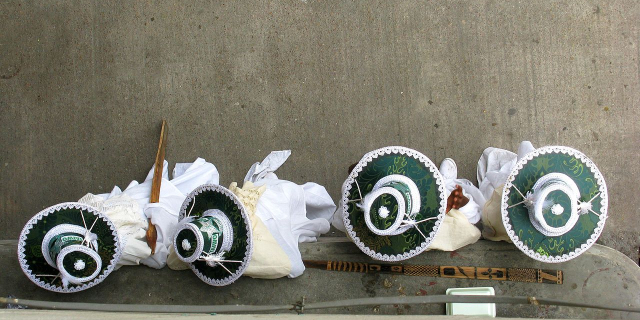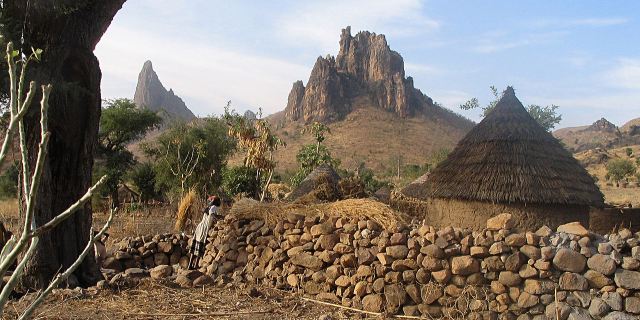Sukur
Sukur or Sukur Cultural Landscape is a UNESCO World Heritage Site located on a hill above the village of Sukur in the Adamawa State of Nigeria. It is situated in the Mandara Mountains, close to the border with Cameroon. Its UNESCO inscription is based on the cultural heritage, material culture, and the naturally-terraced fields. Sukur is Africa's first cultural landscape to receive World Heritage List inscription.
 Stone age iron smelting community of Sukur in Adamawa State, Northern Nigeria, now a UNESCO World Cultural Heritage Site
Stone age iron smelting community of Sukur in Adamawa State, Northern Nigeria, now a UNESCO World Cultural Heritage SiteIron Age relics found in the form of furnaces, ore, and grindstones at the site have been established to be of pre-Sukur existence. There are also some finds from the neolithic period. [1] The recent history is traced to the Dur dynasty of the 17th century. The Dur established the region as a major supplier of raw material for iron manufacture to northeastern Nigeria; this was perpetuated to the first decade of the 20th century. From 1912 to 1922 Sukur was ravaged by the invasions of Hamman Yaje, the Fulbe Lamido (chief) of Madagali. These wars resulted in the decline of iron smelting till 1960, a period which witnessed people migrating to the plains situated towards north and south of Sukur.[1] The British colonising the region from 1927 did not make any difference to the cultural styles of this settlement.[2] Nic David and Judy Sterner gathered information of the generally unknown site and many more publications are being compiled to make this site better known to the outside world.[3]
Its inscription by UNESCO, done under the Criteria of iii, v and vi in 1999, is based on the cultural heritage of the Hidi's Palace complex and village, material culture, and the natural terraced fields, which are in an intact condition. These aspects are cited in the citation which states it as “The cultural landscape of Sukur is eloquent testimony to a strong and continuing cultural tradition that has endured for many centuries.”[1][3] Sukur is one of the country's two UNESCO World Heritage Sites.[4]































Add new comment